- Beer Drop Review: Is It Worth Subscribing To? - May 17, 2022
- Best Italian Beer Guide: Top 15 Beers to Try - May 13, 2022
- Honey Malt Guide: What It Brings to The Table - May 13, 2022
Something is comforting about curling up with a great craft beer or sharing with friends as you cheer on your favorite sports team or just enjoy the season. But if you’re interested in making or finding the best beer possible, you may not realize just how much the quantity and quality of priming sugar guide beer taste and carbonation.
Priming sugar is important for homebrew, but also signature beers served at beloved pubs. The Tavern at Windsor Park is one such example. Located in Williamsville, New York, the pub serves English dishes and just under 50 unique beers.
Highlights of the appetizer menu include Bavarian pretzels, Scotch eggs, stuffed banana pepper, and Windsor chips (English fries complemented with cheese curds, bacon, and pulled pork and covered in gravy). You’ll find a nice selection of wraps and sandwiches, including Prince Charles (shaved prime beef), Eleanor Rigby (pot roast with melted smoked cheddar cheese), and Ringo (grilled chicken with bacon jam, swiss cheese, and cilantro). Burgers and tavern food, of course, are featured in no short supply. Meatloaf, cottage pie, steak and ale pie, bangers and mash, and pot roast are just a few.
But the beer alone is worth coming for. Signature craft beers range from IPAs to pilsners, pale ales, stouts, sours, and others. One of those is their Harvest. This seasonal craft beer is a brown ale made with pure maple syrup from Vermont as its priming sugar. That choice in priming sugar results in a sweet, flavourful finish.
Priming sugar is necessary but often misunderstood– and many may be stuck on certain types of priming sugar without fully exploring their options. In this guide, I’ll tell you what you need to know about priming sugar, from what it does to what types and how much to use. I’ll also show you where to buy priming sugar online.
Do I need priming sugar?
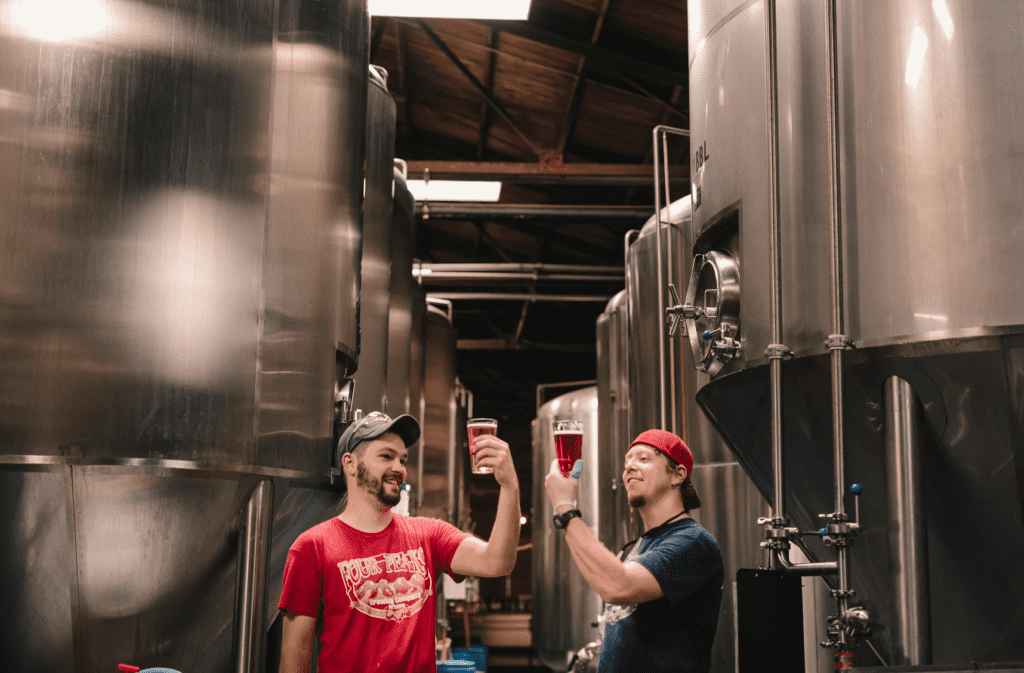
If you’re making craft beer, priming sugar is a must. Priming sugar plays an important role in making beer and can also impact the quality and flavor. If you’re making a malt, chocolate malt often does not need priming sugar. But for beer, you’ll need some form of priming sugar.
While priming sugar comes in many forms, it’s a must-have, just as you need to select yeast and hops for your craft beer. To understand why here’s what priming sugar does and how it behaves.
What does priming sugar do to beer?
Once the beer has been fermented once, it must undergo a second fermentation. Through this second fermentation, priming sugar is added to the beer to encourage carbonation and add needed sweetness and flavor. It’s added before bottling and can be seen as the finishing touch. Yeast also drops during this second stage, and flavors, aromas, and composition become more developed and consistent.
Does priming sugar affect taste?
In addition to impacting carbonation, how much priming sugar you add impacts sweetness. But different types of sugar provide unique hues, flavors, and scents. Priming sugar complements hops and other ingredients and is an important component in that end taste.
That said, some priming sugar options impart a great deal of taste, while others are quite subtle and mostly take on the flavors on your brew. The type of priming sugar you select greatly impacts how it will present on a flavor profile.
Does priming sugar add alcohol?
However, while the importance of priming sugar shouldn’t be discounted, I must also make it clear that priming sugar is not the only factor that impacts alcohol content. Adding sugar can indeed increase alcohol content some, but it’s coordinated with other ingredients. The number of sugars used in the initial fermentation process and the yeast have the most sizable impact.
What kind of sugar is priming sugar?
Here’s where a lot of confusion arises. The term priming sugar may sound like one kind of sugar used for crafting beer, but the reality is that you can use many forms of sugar for priming.
Is priming sugar the same as corn sugar?
Corn sugar is one of the most commonly used forms of priming sugar. Corn sugar, also known as dextrose, is cheap and easy to work with.
What is the difference between priming sugar and regular sugar?
There’s technically no difference between table sugar and priming sugar. However, while economical and easy to work with, regular table sugar is certainly not my top choice for making beer. While table sugar will serve in the role of priming sugar, it doesn’t impart flavor or special aromas.
So if you want a bolder final touch, table sugar isn’t the best choice. By the same token, if you want a very subtle beer or already love the flavors of the yeast and hops, table sugar may work just fine for priming.
Does priming sugar go bad?
Sugar does not easily go bad, and so that’s true for priming sugar. So long as it’s been tightly stored, it takes a lot for it to go truly bad. Of course, there’s something to be said for using the freshest ingredients possible. Newer priming sugar may impart more robust flavors.
What sugar can I use for homebrew?
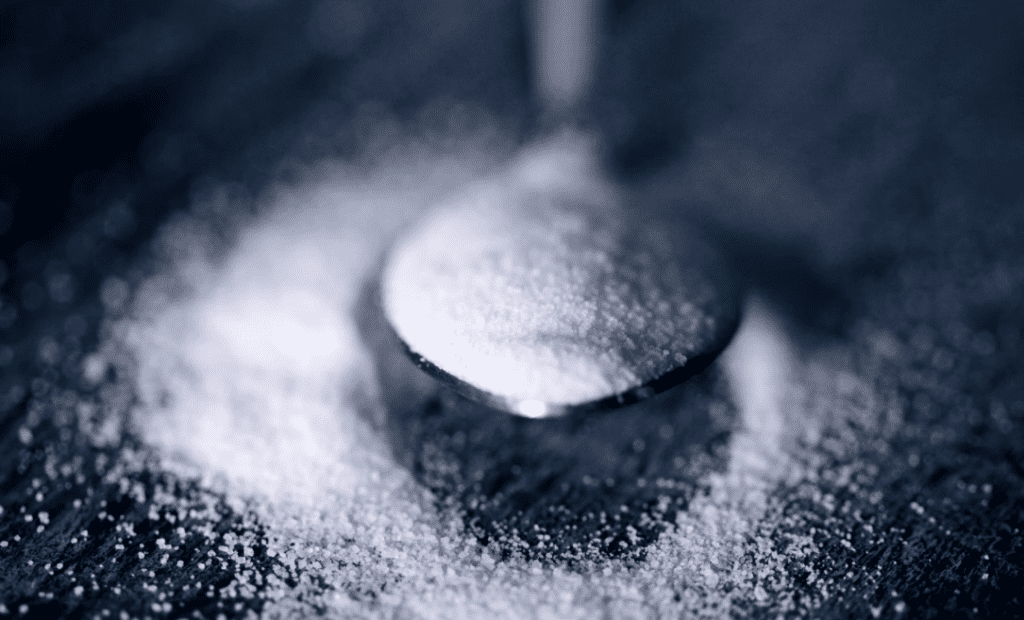
While you have the freedom to select from many different types of sugar for homebrew, there are pros and cons to what you use for priming. Here’s what you need to know to find the best priming sugar for you. Dextrose and table sugar is the easiest to use, but experimenting can produce more robust flavors.
How do you make priming sugar?
You don’t truly make priming sugar– it’s purchased and then used accordingly.
What are alternatives for priming sugar?
See the following suggestions for priming sugar, not as alternatives per se– there is no strict definition as to what priming sugar is. Rather, see these as options to explore beyond your typical table sugar.
- Table (White Sugar)- washed, raw, processed
- Brown Sugar
- Honey
- Coconut Sugar
- Maple Syrup
- Carbonation Drops
- Corn Sugar/ Dextrose
Which sugar ferments the fastest?
Interestingly enough, the sugar that ferments the quickest is not a form of priming sugar at all but the naturally occurring sugars in yeast. That’s because the sugars in yeast– a form of glucose– don’t need to be broken down into components in the same way most other sugars do.
Second that, white table sugar and corn sugar are options if you want fast, easy, and consistent fermentation. If you’ve never made craft beer before, these may be the best priming sugars for home brewing before experimenting with alternatives.
Can you use honey instead of priming sugar? What is dark honey?
Honey is an excellent choice for some, as it provides a unique flavor that’s much more pronounced than table sugar. Because there’s a great variety of types of honey, you can get creative and play with flavors. Dark honey is a general term referring to the hue of honey.
Darker honey will impart a deeper tone and often taste richer– but not always more flavorful. Blossom honey, which is often lighter in tone, provides a floral and bright taste. Check the link above for some fantastic types of honey you can try.
Does honey take longer to ferment?
. At the same time, it’s not a favorite for quick brewing or large batches. Honey takes a long time to ferment– as long as three to seven weeks. So if you plan to use honey, plan well ahead of time. Honey is, of course, a must for making mead.
How much gravity does honey add to the beer?
Another tricky thing about using honey is the type of honey can greatly affect beer’s specific gravity. A good specific gravity for your average beer ranges from 1.005 to 1.015. The type of honey you use truly can change that specific gravity.
You can expect an average beer gravity of 1.032 to 1.040– hence, a heavier beer but also one that’s less predictable if you’ve never brewed with honey before. The good news is that higher gravity beers– as is the case with beer primed with honey–shouldn’t take longer to carbonate once they are finished.
Is honey healthier than sugar?
There’s a myth that there’s the healthiest sugar. Honey that is not ultra-processed has been shown to contain some chemicals that support healing and have antioxidants. Most regular sugars (not sugar substitutes) are metabolized fairly similarly by the body. I wouldn’t select your priming sugar based on health. Brown sugar is not healthier than white sugar.
Is brown sugar fermentable?

Brown sugar and white sugar both come from beets or sugar cane and share many of the same properties. The main difference is that brown sugar contains molasses. It is fermentable nearly as quickly as white/ table sugar while imparting a richer hue and mild but still more pronounced flavor.
Is washed sugar the same as brown sugar?
Washed sugar refers to natural, pure can white sugar, which, of course, can also be used for priming. There’s not a true advantage over using raw sugar vs processed sugar for priming. You can brew with raw sugars, which take slightly longer but are still quick to ferment.
Can I use caster sugar to prime beer?
Caster/ caster sugar is not much different than what you’d consider table sugar. It is easy to use, effective and imparts little in flavor, aroma, or hues.
Can I use maple syrup as a priming sugar?
Looking for a flavorful boost to your brew? Maple syrup can indeed be used in place of typical priming sugar. Popular for seasonal craft beers for Fall and Winter, maple syrup is expensive but imparts great flavors for ales. Make sure you’re using genuine maple syrup, not corn syrup, for the best effect. Explore all kinds of maple syrup and experiment with flavors.
Are carbonation drops just sugar?
Another alternative to typical priming sugar is carbonation drops. Carbonation drops are simply lumps of hardened, pre-measured sugar (glucose and/or dextrose) that are used for priming.
Is carbonation drops better than sugar?
The idea is to provide convenience and consistency. When you’re using carbonation drops instead of other sugar, you’re sure to get exactly the measurements you want for optimal results. Carbonation drops are a practical option if you’re making multiple batches or large batches, plus they’re easy to store. You can easily use white/ table sugar in place of carbonation drops if you want to save a little money.
How much priming sugar do I need?
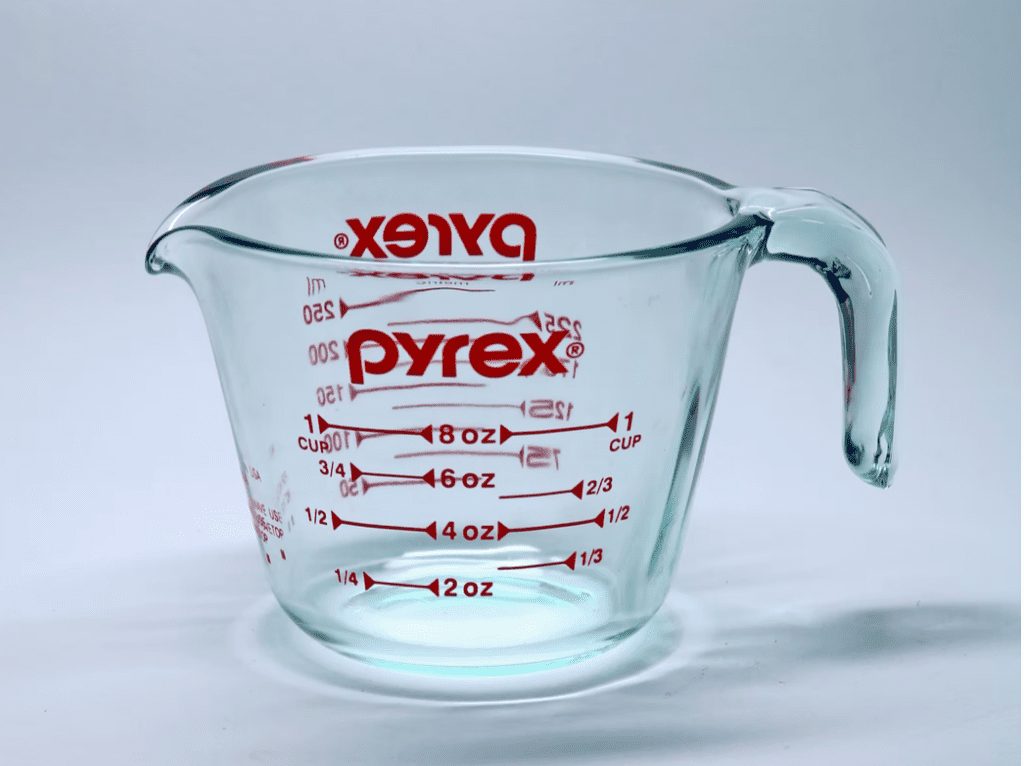
Even with the best priming sugar, it’s essential to get the measurements right. Below is a list of frequently asked questions about priming sugar quantities, but here’s a general rule to follow: use ⅔ cup of table sugar or 3/4 cup of corn sugar per every five gallons. That’s the equivalent of 5.3 ounces/ 150 grams of table sugar or 113 grams/ 4 ounces of corn sugar.
How much priming sugar do I use for 1 gallon of beer?
For solid sugars, you simply divide the ratios I mentioned above by five. Thus, you need roughly one ounce of table sugar or ⅘ ounce of corn sugar for brewing a single gallon of beer.
How much priming sugar do you put in a bottle?
Priming sugar is added directly before bottling to ensure even and optimal carbonation. Sometimes an extra teaspoon of sugar is added to the process.
How much sugar does it take to prime a 750ml bottle?
Depending on the sugar, a 750ml bottle would equate to around 4.5 grams– a little less for corn and a little more for table sugar.
How much priming sugar do you put in a bottle of cider?
Cider is a bit different from beer. For cider, aim for an ounce for every half to a full cup of water, depending on the carbonation and level of desired sweetness. As is the case with priming sugar for beer, make sure it’s even dispersed and dissolved before botting. For 5 gallons of cider, you’d need roughly a third to half a cup of priming sugar.
How much sugar do I need to Prime 23 liters of beer?
If you want to simplify things, you’ll need roughly five to ten grams of sugar for every liter of beer. Thus, 23 liters of beer calls for 115 to 230 grams of sugar. To prime 20 liters of beer, go by the same formula, assuming you’re using corn or table sugar.
How much sugar do I need to carbonate a 12 oz beer?
For a single bottle of beer, you don’t need much at all. A single teaspoon of sugar will do the trick, though it’s rare to brew only one bottle of beer at a time.
How much sugar does it take to prime a 500ml bottle?
A 500 ml is likewise quite small and requires little for priming. Add roughly a quarter to a full teaspoon of corn or table sugar.
How much priming sugar do you put in a keg?
There’s not much difference about priming beer in a keg vs bottles, but many do use a little less priming sugar for kegs vs bottling. Aim for up to half a cup for a keg of five gallons. The nature of working with a keg is that you should add priming sugar carefully, as it’s easier to use too much priming sugar and cause overflow.
How much sugar do you need to prime a pressure barrel?
If you’re using a pressure barrel, it takes a range of 50 grams to 100 grams of table or corn sugar for every 5 gallons of beer. Another guideline is to use an average of 3.5 grams per liter.
How much dextrose do I substitute for sugar?
With these measurements in mind, note that you’ll need to adjust amounts if you use other types of sugar for priming. Dextrose is a powder made out of glucose– making it very fermentation friendly. The measurements are a bit different: take the amount of table sugar needed and multiply by 0.7 for the amount you need.
How much maple syrup do you use for priming sugar?
No matter the grade or type of maple syrup, you’ll want to aim for 1 ¼ cups of syrup for every 5 gallons of beer. I recommend going on the lighter side first then adjusting as needed. Too much maple syrup can pose complications and poor results.
How much honey does it take to prime 5 gallons of beer?
The same is true for honey: you can easily overdose on it. For regular beer, a ratio of 1 cup of honey: 5 gallons of beer is normal. You may want to use slightly less if you’re opting for a lighter flavor or using a stronger, bolder form of honey.
How do you use priming sugar?
Now that you know the basics of the types of priming sugar you can use and how much priming sugar you can use, I want to discuss how to work with priming sugar of all kinds for the best results. The most common mistakes often revolve around timing.
How much water do you add to priming sugar?
The amount of water you add to priming sugar depends on ratios. To prepare priming sugar, the average is boiling two cups of water with ¾ cups of table sugar.
Why do you boil priming sugar?
Priming sugar needs to be boiled to ensure that it’s entirely dissolved and also evenly distributed. Contrary to popular belief, boiling is not used for sanitization.
How long do you boil priming sugar?
I’ve seen that some boil priming sugar for as long as 10 minutes, which is excessive for table sugar. Depending on how much you’re trying to dissolve, it normally takes a few minutes– around 2 to 4.
Do you have to dissolve priming sugar?
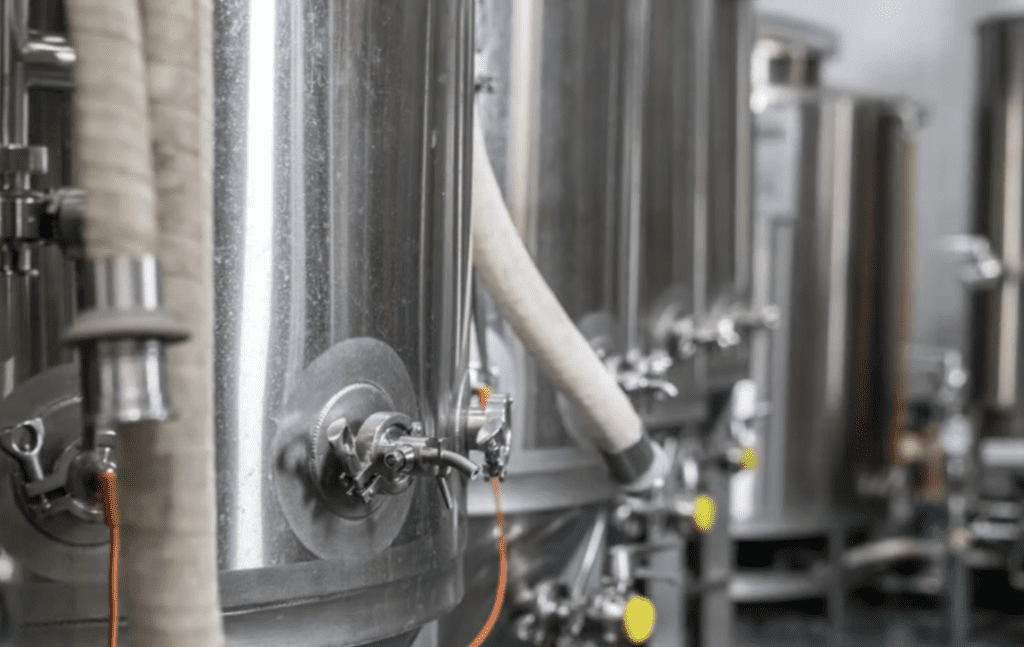
This is one of the seemingly simplest but also biggest mistakes to make: not waiting for your sugar to completely dissolve. You must boil until whatever priming sugar you’re using has properly dissolved. That should be the primary indicator for how long you boil priming sugar instead of going based on time. Don’t keep boiling after it’s dissolved– you should watch closely over the brewing process.
Do you let priming sugar cool?
I recommend letting priming sugar cool enough so that it’s not piping hot. Three to five minutes often suffice. It can still be warm to the touch but not scalding.
Can you add priming sugar to the fermenter?
Another way to use priming sugar is to add it to a primary fermenter. If you wish to do this, the process is not that different. Simply measure the ratio of primary sugar, boil until it’s dissolved, then let it cool. It should be slowly added by placing a siphon tube against the button of a clean bucket used for bottling. A slight twist helps improve consistency.
Can you leave the beer in the fermenter too long?
You probably know that the longer you leave the beer in a fermenter (or allow it to ferment), the higher the ratio of alcohol. Those looking for a strong, dry beer are apt to leave it in the fermenter for as long as possible. But there is such a thing as leaving your beer to ferment for too long. Aim for no more than 25 days in the fermenter at the absolute maximum length of time. The problem with leaving a beer to ferment too long is that it can mar the flavor and even the safety of your beer. I recommend testing it sooner than you think you’ll need to and adjusting accordingly.
How do you know when alcohol is done fermenting?
Generally speaking, you can tell you’re at an acceptable level of fermentation. Yeast should no longer surface at the top but settle. You’ll notice it’s no longer actively bubbling in the fermenter. If you want to be precise, you may purchase an analytical testing device like the New EasyDens.
Can you bottle straight from the fermenter?
If you’re sure your brew is in a good state and has been left in the fermenter for long enough, it is possible to bottle it directly afterward.
What does bottle-conditioned beer mean?
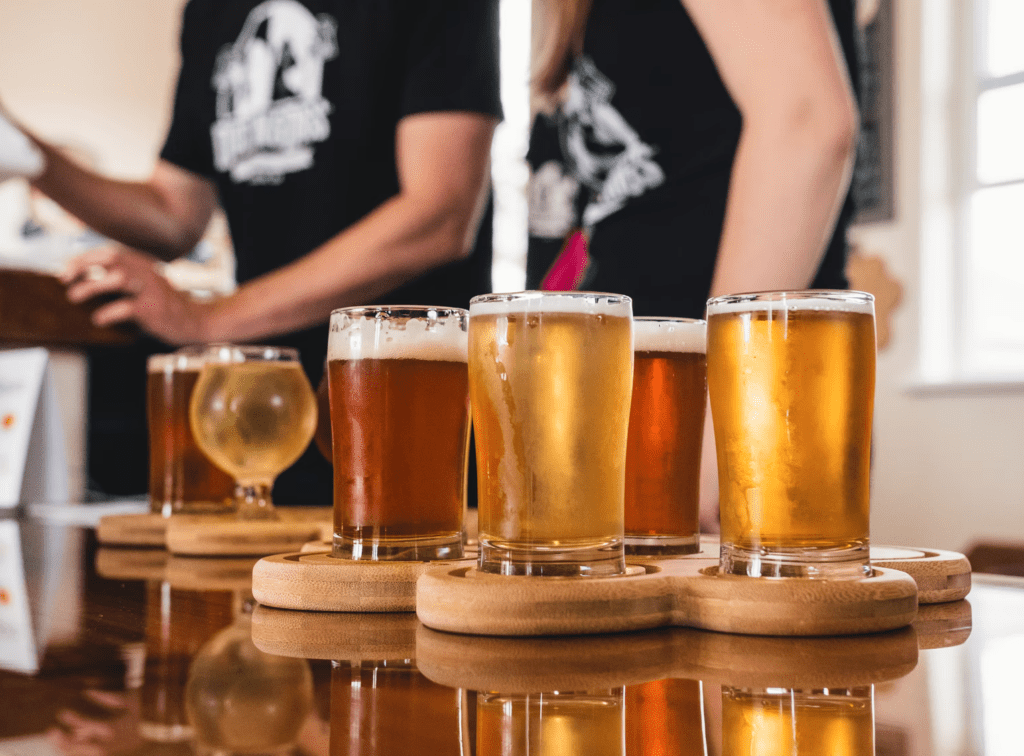
When a beer is bottle conditioned, it means that beer has been made and brewed without purposely adding extra carbon dioxide. The timeless, traditional method usually relies on adding brewer’s yeast right after bottling. The impact is twofold. The yeast starts the fermentation process again while also imparting robust flavors. So essentially, what bottle conditioning does is naturally carbonate your beer with sugar and yeast.
Usually, you don’t need to add yeast after bottling. Still, it’s helpful for natural carbonation and if you’re going for a bottle-conditioned beer.
Is bottle-conditioned beer healthy?
The jury is out on whether or not beer, in general, is healthy. Some studies have indicated a correlation between moderate beer consumption and reduced risk of cardiovascular disease, though, of course, we know beer drinking at high levels poses risks– as well as moderate drinking risks for some individuals. As far as bottle-conditioned beer is concerned, they may be richer in some vitamins and minerals, including B vitamins, chromium, and protein.
How long should I bottle condition my cider?
For cider, bottle conditioning can take anywhere from a week to two weeks. I’d check on it after 7 days and assess. However, the longer end of this period is superior for bolder cider flavors. While you can bottle cider after primary fermentation, you’ll have better results waiting for secondary fermentation, allowing primary fermentation to complete (usually around 5 days to a week).
How soon can you drink cider or beer after bottling?
Once you bottle cider or beer, you certainly don’t want to drink it right away. Allow a week for the beer or cider to settle and store it appropriately.
Where do I buy priming sugar, conditioning tablets, and carbonation drops?
From table sugar to honey to maple syrup, your options for priming sugar are pretty endless. Most of the sugar you’re looking for a can, of course be bought in supermarkets and wholesale retailers. Note that you can also buy priming sugar options and other ingredients and accessories from specialty beer websites, such as More Beer.
Shop around and see what suits you. Start with a product you’re more certain about, then branch out and get a bit more creative and adventurous. You don’t have to spend a fortune to get some great ingredients.
But if you’re looking for specialty options like carbonation drops or unique maple syrups, I have a few recommendations. All of my picks come from Amazon and are made by well-rated manufacturers or brands. I’ve selected some of my favorite options based upon customer reviews, reputation, and either convenience or imparting a unique flavor for your craft beers. Here are some options that caught my attention.
Coopers Home Brewing Carbonation Drops
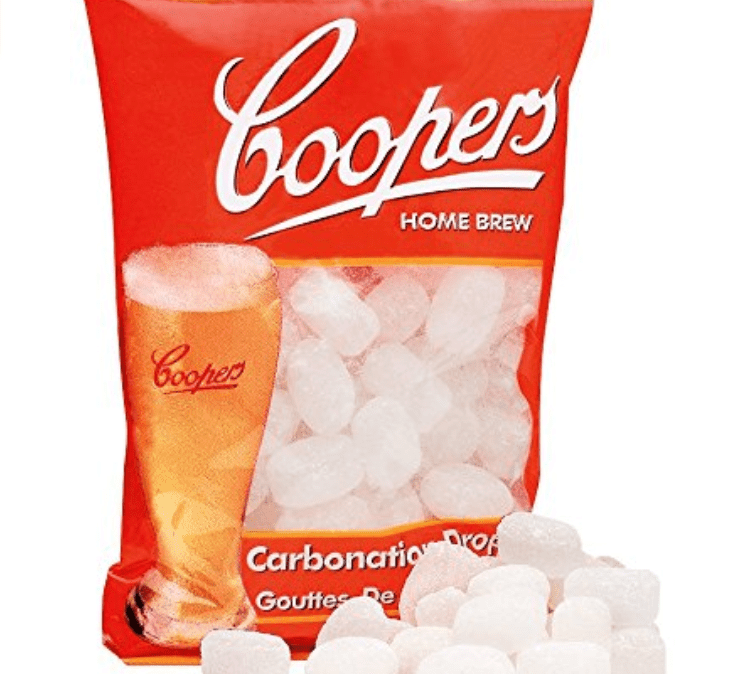
Want to ensure consistency and easy brewing? Consider these highly rated carbonation drops. Each package comes with 60 carbonation drops, which is good for up to 6 gallons of homebrew. The drops easily dissolve and provide just the right amount of yeast and priming sugar for quality fermentation. It’s useful for small and larger batches alike, complete with dosage instructions right on the package. Made in Australia; Buy Here.
Pros
- Consistent Brewing
- No Measuring Required
- Highly Rated
Cons
- Imparts Little Flavor
- More Expensive than Regular Priming Sugar
Home Brew Ohio Brewer’s Best Spices Herbs Fruits and Fruit Flavorings Carbonation Tablets
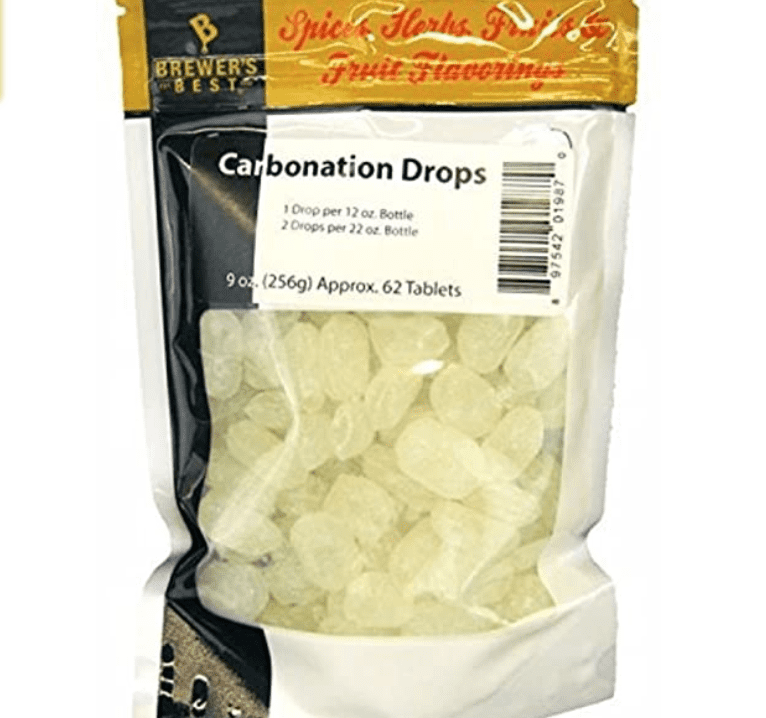
From my home state comes these fantastic carbonation drops. You get all the convenience of carbonation drops– but with unexpected flavor infusion. Each package comes with approximately 62 drops– at a great price.
You’ll need one drop per 12 fluid ounces. Each drop features fruity flavors and spices and can be used for beers of all kinds, as well as hard cider. Get ready to brew some festive and unique craft beers. Buy Here.
Pros
- Consistent Result
- Unique Fruit and Spice Flavors
- No Measuring
Cons
- Many Packages Come with less than 60 Tablets
- Fruity Flavors Not as Versatile
Brewer’s Best Conditioning Tablets
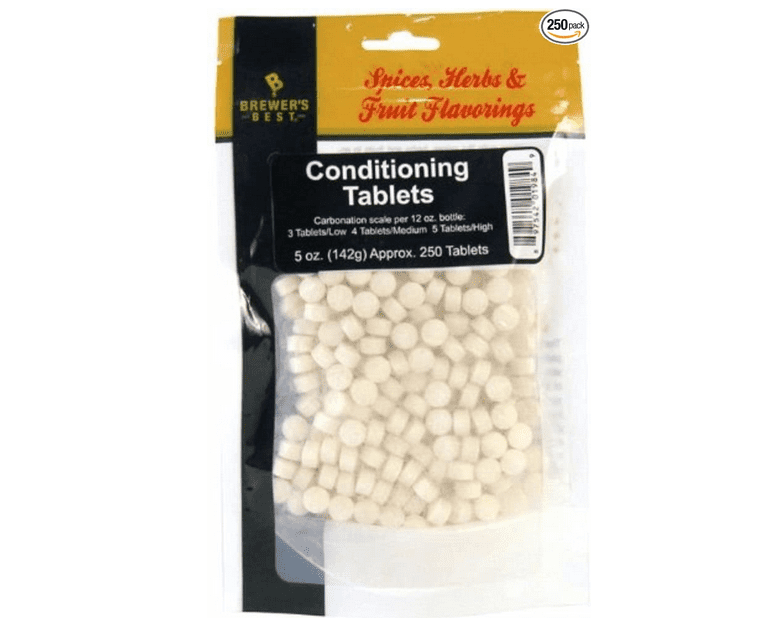
These priming sugar tablets are made with dextrose, dry malt extract, and heading powder. Three to five tablets are used for a 12-ounce bottle and take one week for bottle conditioning.
This is a nice alternative to carbonation tablets if you’re working with very small batches and still want that consistency and convenience. Buy Here.
Pros
- Fast Dissolving
- Pre-Measured
- Easy to Use
Cons
- Have to Use Multiple Tablets
- More Expensive
Corn Sugar For Beer Brewing
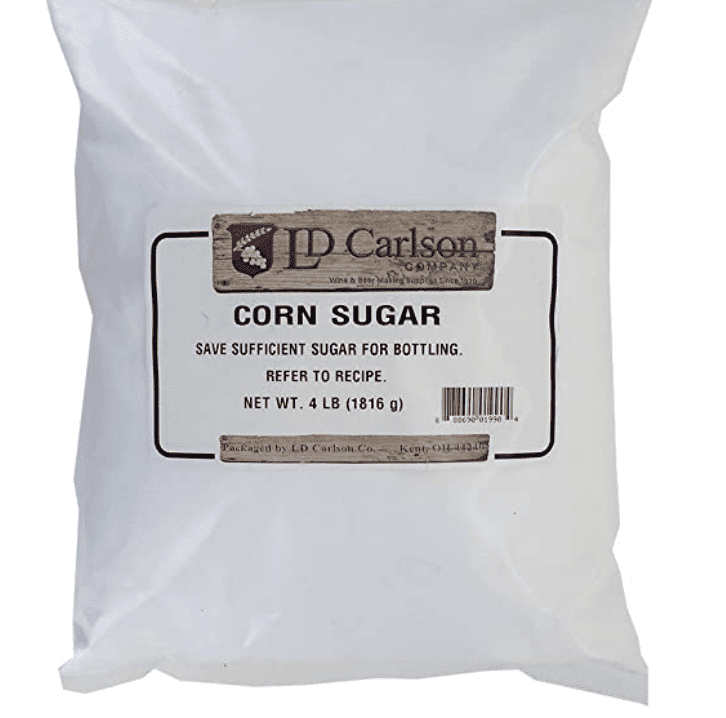
Another tried and true option: corn sugar. This priming sugar comes in 4 pounds packages and is sold by Home Brew Stuff, a specialty retailer for ingredients, kits, and more.
This helps raise your beer’s alcohol content and is recommended for high gravity beers, such as Double IPA, Barley Wine, and Belgian beers. You can also use it for bottle-conditioned beers, and it dissolves easily for no-fuss use. Buy Here.
Pros
- Great for High Gravity Beer
- Dissolves Quickly
- From Specialty Retailer
Cons
- Not Distinct Flavor
- Measurement Can be Messy
Coombs Family Farms Organic Maple Syrup, Grade A Amber Color

This rich, grade-A maple syrup is sure to add seasonal flair to your craft beer. The 100 percent organic syrup is fresh and rich. The smooth, full-bodied syrup is unique but also more subtle than its rich amber hue implies.
It’s sourced from local, independent farms in Vermont for signature and responsible sourcing that you can taste– whether it’s in your beer or on your morning pancakes. Buy Here.
Pros
- Organic, Grade A
- Full Body and Rich Hue
- Supports Independent Farmers
Cons
- Using Syrup Takes Patience
- Fairly Subtle for Syrup
Canadian Finest Maple Syrup

Want to make sure you’ll enjoy the flavor you’re adding to your craft beer? This crowd-pleasing Canadian syrup is the #1 in ratings on Amazon– quite a feat. This 100 percent organic maple syrup is produced from small family producers in Quebec.
The Grade A Dark syrup features a rich deep hue and is free of additives, preservatives, or flavors. It has a bolder flavor profile than my last pick and would make for a statement IPA. Buy Here.
Pros
- Organic and Top-Rated
- Robust Flavor
- Great for Bold Beer
Cons
- Syrup can Tricky to Use
- Pricey
365 by Whole Foods Market, Honey Mountain Forest Amber Organic

Fairly well-priced honey with a great flavor. Try this as a priming sugar for any craft beer or make some mead. This 100 percent organic honey from Whole Foods has a distinct, bold flavor. If you like molasses, you might appreciate the hint of molasses-like richness.
This will take a while for fermentation, but you’ll have a distinct finishing flavor and rich finish for your craft beer. Plus, you can easily use any extra honey for your favorite recipes or in your tea. Buy Here.
Pros
- Great for Mead
- Rich Hue and Bold Flavor
- Organic
Cons
- May be Too Bold for Some
- Only Suited for Heavy Beer
Fast Prime – Canned Priming Solution
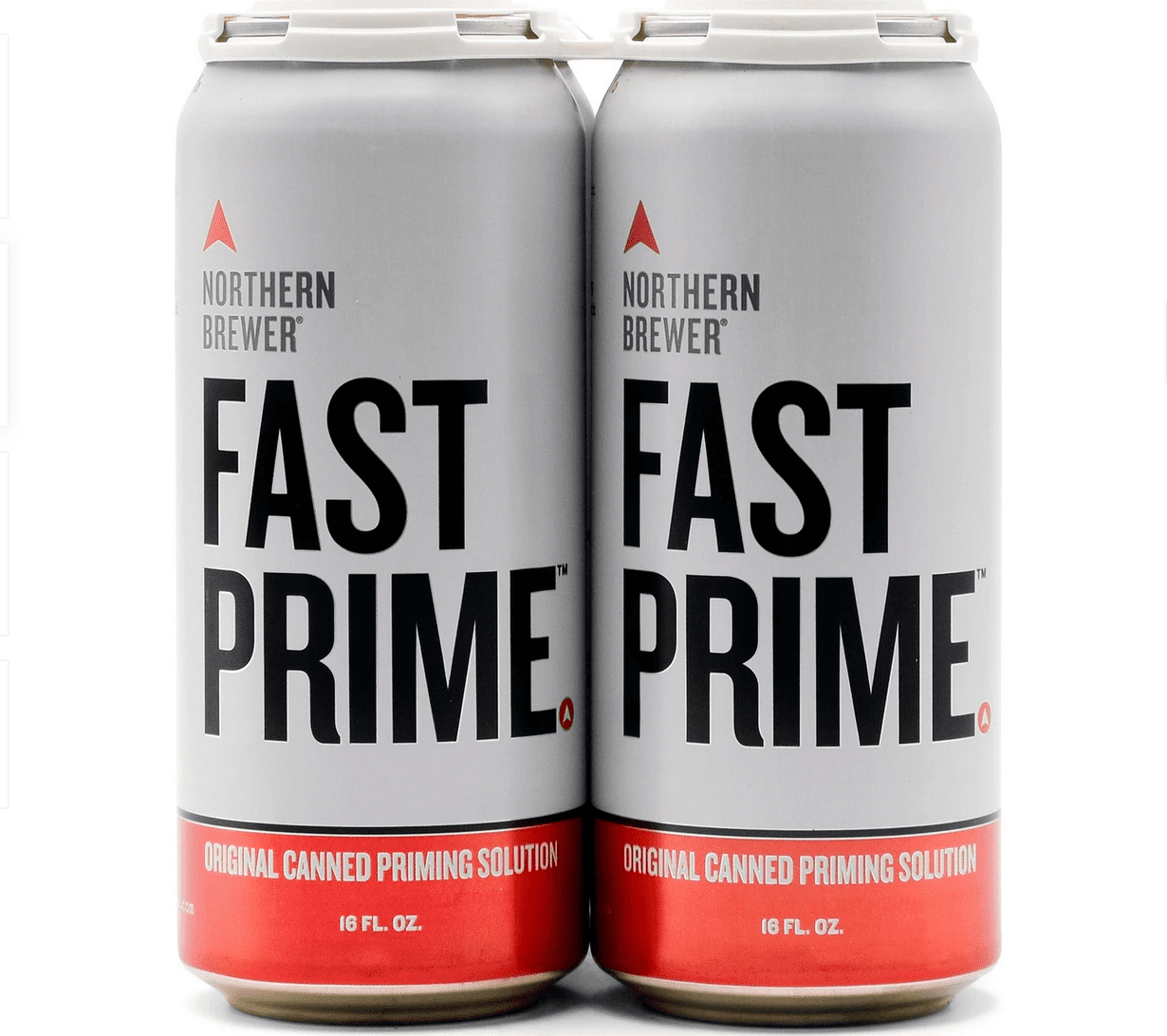
This unique option allows you to bypass many steps and is for someone who’s overwhelmed by the brewing process. Meant for quick priming, all you need to do is sanitize, pour the priming solution into your bottling bucket, then rack your beer.
A single can provides carbonation for a 5-gallon batch, and you’re buying in a four-pack. Each can is the equivalent of 5 ounces of priming sugar. Buy Here.
Pros
- Easy to Use
- Cuts out Steps
- Intuitive for Beginners
Cons
- Doesn’t Teach Brewing Process
- May be Less Rewarding
Frequently Asked Questions
Question: Can you use SodaStream to carbonate beer?
Answer: If you have SodaStream, it is possible to use it in your beer-making process– but there are a few caveats. First, SodaStream shouldn’t be used as your primary carbonation method but rather to reinvigorate carbonation as needed. Secondly, you’ll need to completely clean after using. You don’t want to contaminate other drinks with residue, odors, and flavors from your homebrew.
Question: Can you make alcohol from sugar water?
Answer: On a chemical process level, sugar water combined with yeast can become alcohol as sugar transforms into carbon dioxide and ethanol.
Question: What is the best temperature for brewing beer?
Answer: While temperature is dependent on the type of beer and result you’re aiming for, a range of 60 to 70 degrees Fahrenheit is usually ideal.
Question: How do you carbonate hard cider?
Answer: The first step to force carbonating hard cider is to ensure your container has enough room at the top to be shaken and moved around. If you’re using a bottle, I recommend making sure there isn’t extra air at the top. Once the cap is secured, it may be connected to CO2. Keep the pressure low and steady, and note that the cooler your cider is, the more receptive it will be to carbon dioxide.
Question: How do you sweeten cider before bottling?
Answer: When you’re making hard cider, aim for a ratio of 6 ounces a gallon for a mildly sweet result. You may use honey, fruit juice (apple is most recommended), table sugar, or juice concentrate. Aim for a sweetener that is light in coloring and not too distinct so that it won’t fight the natural cider flavors.
Question: Can you ferment cider too long?
Answer: As is the case with beer, it is possible to ferment hard cider to a degree where you’re facing worse outcomes. The longer your ferment, the stronger your cider will be. While that may sound appealing, too much fermentation will lead to off-flavors. Overdoing the fermentation can even reduce carbonation. As such, it’s best to allow the cider to ferment for 5 to 14 days– the average time for how long it takes cider to ferment.
Don’t be concerned if you test it earlier and your cider tastes like vinegar– it’s likely still undergoing the fermentation process. The cider will age well and can keep for years when stored properly and bottle conditioned.
Question: How do you make homebrew cider fizzy?
Answer: Flat cider is usually the result of not using enough yeast or priming sugar and not giving it enough time to ferment. Adding just half a teaspoon of table sugar and turning your container upside down (assuming it’s a bottle) can promote robust carbonation. Still, it doesn’t always work if you’ve followed other steps incorrectly.
Question: Is fermented honey safe to eat?
Answer: While most fermented honey is safe to eat if stored properly I doubt you’re going to want to eat it on its own. Fermented honey has a very different flavor and odor.
Question: Is granulated sugar the same as corn sugar?
Answer: Granulated sugar, also referred to as white table sugar, is different from corn sugar. Corn sugar is a form of dextrose, while table sugar is sucrose. For fermentation purposes, the measurements are slightly different, and corn sugar will ferment a bit more quickly than table sugar.
Question: What yeast produces the highest alcohol content?
Answer: The alcohol content is determined by several factors, including fermentation time and the yeast you use. Turbo yeast is sometimes used to trim down the fermentation to yield a higher alcohol content.
Question: What sugar is best for carbonating beer?
Answer: There is no one best sugar for carbonating beer. Still, table sugar and corn sugar tend to be the easiest to work with, boasting shorter fermentation times and consistent results. At the same time, these two options will not provide as unique or robust flavors as some other options.
Question: How can I make my homebrew stronger?
Answer: Increasing fermentation time is the best way to make your homebrew stronger (as in more alcohol). Adding more sugar can be helpful but stay within reasonable proportions.
Final Thoughts
Both the type and amount of priming sugar you use holds implications for the flavor and quality of craft beer. I recommend following general guidelines and starting easy with something like table or corn sugar, then venturing out from there. One great thing about beer making is that you can experiment with flavors and even quantities once you master the basics. It may not turn out exactly how you expect it to– but sometimes that’s part of the enjoyment.
Final Buying Recommendations
If the process of brewing beer from scratch seems overwhelming, you may benefit from a unique brewing kit. More beer has just about everything you need with its impressive selection of beer starter kits for both one-gallon recipes and five-gallon recipes.

